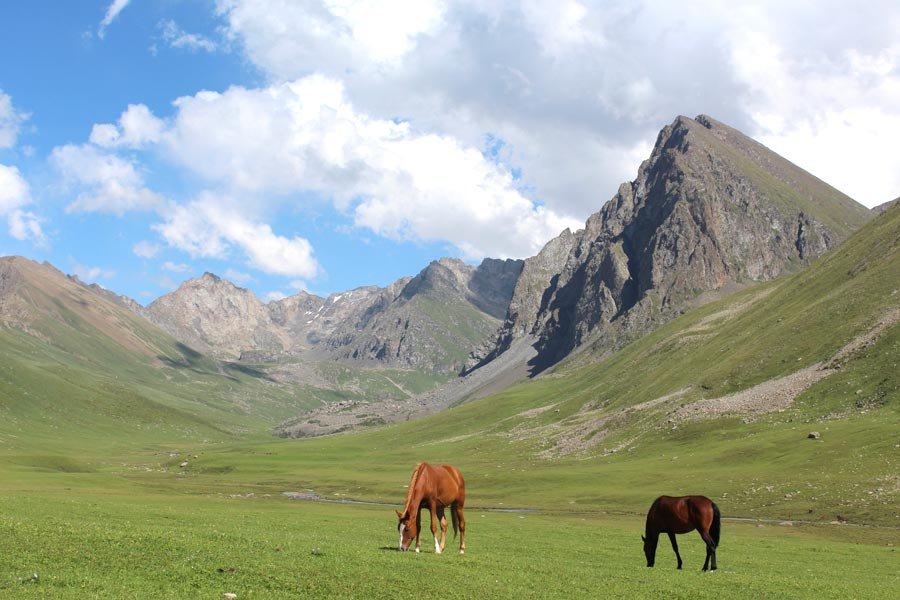
10 Major Mountain Ranges of Asia
Asia, the largest and most populous continent on Earth, is blessed with a diverse and magnificent landscape that includes towering peaks, vast plateaus, deep valleys, and rolling hills. Mountains, in particular, dominate the landscape of Asia, providing breathtaking views and awe-inspiring natural wonders. In this article, we will explore the 10 major mountain ranges of Asia, their history, geography, and cultural significance.
Introduction
The introduction will provide an overview of the article’s topic and purpose, and a brief description of the importance of mountains in Asia.
1. The Himalayas: The Roof of the World
The Himalayas, the world’s highest and most extensive mountain range, stretch over 2,400 km across five countries: Bhutan, Nepal, China, India, and Pakistan. This section will explore the geography and history of the Himalayas, their role in shaping the region’s culture and religion, and the popular tourist destinations in the area.
2. The Karakoram Range: The Home of K2
The Karakoram Range, located in the northernmost part of Pakistan and India, is known for its dramatic peaks and glaciers. This section will cover the geography and history of the Karakoram Range, the significance of K2, the world’s second-highest mountain, and the opportunities for trekking and mountaineering in the area.
3. The Pamir Mountains: The Roof of Central Asia
The Pamir Mountains, also known as the Pamirs, are a range of high mountains and plateaus in Tajikistan, Afghanistan, China, and Pakistan. This section will explore the geography and history of the Pamir Mountains, the role they played in the ancient Silk Road trade route, and the unique cultures and traditions of the people living in the area.
4. The Kunlun Mountains: The Backbone of China
The Kunlun Mountains, located in western China, are known for their stunning natural beauty and rich cultural heritage. This section will cover the geography and history of the Kunlun Mountains, the role they played in the development of Chinese civilization, and the popular tourist destinations in the area.
5. The Tian Shan Mountains: The Celestial Mountains
The Tian Shan Mountains, located in Central Asia, are a range of high mountains and plateaus that stretch across China, Kazakhstan, Kyrgyzstan, and Uzbekistan. This section will explore the geography and history of the Tian Shan Mountains, the unique flora and fauna found in the area, and the opportunities for outdoor activities such as skiing, hiking, and mountaineering.
6. The Altai Mountains: The Heart of Siberia
The Altai Mountains, located in southern Siberia, are known for their rugged terrain, unique biodiversity, and cultural significance. This section will cover the geography and history of the Altai Mountains, the role they played in the development of the Scythian culture, and the opportunities for outdoor activities and ecotourism in the area.
7. The Ural Mountains: The Boundary Between Europe and Asia
The Ural Mountains, located in western Russia, are a range of low mountains and hills that divide Europe and Asia. This section will explore the geography and history of the Ural Mountains, the unique flora and fauna found in the area, and the cultural significance of the Urals in Russian folklore and mythology.
8. The Zagros Mountains: The Spine of Iran
the role they played in the development of the ancient Persian civilization, and the unique flora and fauna found in the area.
9. The Caucasus Mountains: The Crossroads of East and West
The Caucasus Mountains, located between the Black Sea and the Caspian Sea, are a range of high mountains that form a natural barrier between Europe and Asia. This section will explore the geography and history of the Caucasus Mountains, the cultural diversity of the region, and the opportunities for outdoor activities and cultural tourism in the area.
10. The Hengduan Mountains: The Home of Shangri-La
The Hengduan Mountains, located in southwestern China, are known for their stunning scenery, unique biodiversity, and cultural significance. This section will cover the geography and history of the Hengduan Mountains, the role they played in the development of the Tibetan culture, and the popular tourist destinations in the area.
Conclusion
In conclusion, Asia is home to some of the most spectacular and diverse mountain ranges in the world. These natural wonders have shaped the region’s culture, history, and way of life, and continue to inspire awe and wonder in visitors from around the world.
FAQs
- What is the highest mountain in Asia?
- The highest mountain in Asia is Mount Everest, which is part of the Himalayas.
- Are the Pamir Mountains located in one country?
- No, the Pamir Mountains are located in Tajikistan, Afghanistan, China, and Pakistan.
- What is the significance of the Caucasus Mountains?
- The Caucasus Mountains are known for their cultural diversity and for being a natural barrier between Europe and Asia.
- Are the Hengduan Mountains a popular tourist destination?
- Yes, the Hengduan Mountains are a popular tourist destination for their stunning scenery and cultural significance.
- Can you see the Ural Mountains from space?
- Yes, the Ural Mountains are visible from space and are considered a natural boundary between Europe and Asia.

Leave a Reply